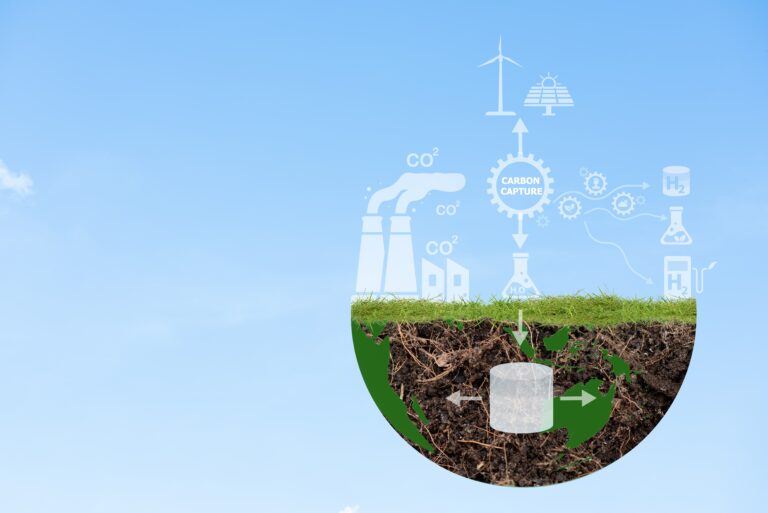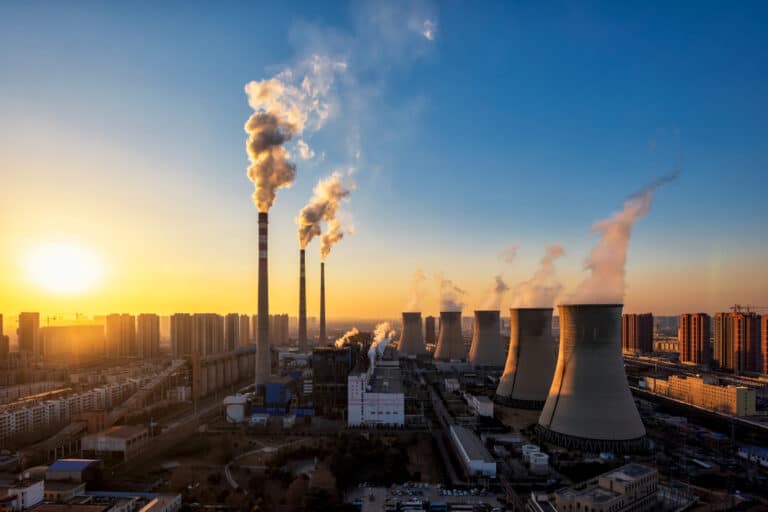Download the summary (PDF)
May 28, 2014
SUMMARY OF THE ROUNDTABLE ON THE RESILIENCE OF THE
LIQUID FUEL SUPPLY CHAIN IN THE NEW YORK CITY AREA
INTRODUCTION
On May 9, Columbia University’s Center on Global Energy Policy hosted the first roundtable on the resilience of the Tri-state region’s liquid fuel supply chain. The forum brought together top federal, New York, New Jersey and Connecticut and New York City energy and resilience officials with high-level representatives from the energy industry, including electric utilities, refineries, terminals, pipelines and retail outlets, to discuss the damage caused by Superstorm Sandy, problems in the fuel chain network and recovery efforts revealed by the disaster, and the potential for strengthening the system. The roundtable responded to a request from the City of New York and interest from other stakeholders.
The forum, held under Chatham House Rule, provided an opportunity for these stakeholders to speak about the strains and limitations on the regional fuel network, as well as actions needed for improvements. The roundtable also gave participants an opportunity to develop working relationships, build communications networks and share best practices. Since the turn of the century, the New York metropolitan area’s energy network has faced large-scale disruptions on multiple occasions. In addition to Superstorm Sandy, which caused by far the biggest and longest lasting interruption to the liquid fuel supply chain, the region faced the 2001 World Trade Center attacks and the 2003 blackout. Participants noted that conversations like these can also provide an opportunity for an exchange of views on pending proposals such as those by New York State and the U.S. Department of Energy for government refined product emergency reserves, as well as studies like the National Petroleum Council’s strategic examination of Natural Gas and Oil Infrastructure Resilience and the federal government’s first Quadrennial Energy Review. This review will focus initially on infrastructure for transmitting, storing, and delivering energy.
Sandy exposed weaknesses throughout the entire supply chain and in the response plan to fuel emergencies. The closed waterways, wrecked docks, and swamped infrastructure coalesced into one of the biggest fuel crises in the region’s history. Participants noted, however, there were successful efforts and decisions that helped alleviate pressure during the crisis, such as the quick turnaround on waivers for the Jones Act and fuel standards and the innovative efforts of many companies to return services to customers.
Following is a summary of the issues discussed during the roundtable.
SITUATIONAL AWARENESS
Communication system: A fundamental problem identified at the roundtable was the difficulty many of the key actors had in effectively identifying the proper responsible parties to contact and getting the exact information they needed during Sandy. Industry representatives were challenged in quickly finding out with whom they needed to speak across all levels of government on emergency matters, while receiving at times redundant calls from officials seeking status updates of installations and infrastructure. In other cases, finding the correct official or agency to grant a needed waiver proved difficult. Government officials had difficulties in identifying knowledgeable, senior level people within energy companies to contact and to obtain industry information needed to make decisions on how they could best utilize resources to ease the crisis, participants said.
In some instances, channels for such communications were in place but not familiar to all parties, and, at other times, it appeared as if no one was in charge, some attendees said. The sheer volume of calls as well as failed connections slowed recovery efforts. Creating greater awareness of existing networks in some cases and building others where they do not exist were potential solutions put forward to help alleviate this problem. Maintaining current staff lists was also mentioned as an important step toward facilitating communications in the midst of crisis, as turnover in both industry and government can be high. Some participants noted the need for a clear depiction of, and list of responsible contacts at, the key fuel suppliers to the region.
Some efforts to build better communications networks were identified in New York City, but, as noted, input and support from stakeholders will be vital if they are to become valuable tools.
Information Flow and Access: Timely availability of data on operational status and emergency plans for key assets such as terminals and retail outlets to government officials making rapid response decisions, including regulatory waivers and getting emergency supplies deployed to the areas most in need, was identified as needed to ensure they are making the right calls quickly. During its response to Sandy, government at times relied on impromptu information gathering methods such as crowd sourcing mobile apps and calls from people on the ground to find supply bottlenecks. Such methods proved invaluable on occasion but their reliability cannot be assured, and even when the data is reliable it may not give a complete picture, according to participants.
In terms of addressing regulatory requirements that may impede prompt response, some participants suggested the need for a current, accessible database including all relevant requirements, waiver standards and procedures and contacts responsible for administering them. It was noted that New Jersey has prepared a list of potential waivers relevant to the fuel supply chain together with the pros and cons of granting them.
Some attendees said that a careful balance must be struck, however, if companies are to be asked to provide frequent, detailed information about their operations during a fast moving crisis. Neither industry nor government wants efforts to bring supply to consumers or bring infrastructure back online to be delayed by data requests, according to some roundtable participants. At the same time, sharpening the government’s picture of the situation helps to create more precise and effective response of where and when it musters its resources. Government does not want to rush in to a situation and disrupt the commercial balance as industry attempts to find the economic incentives to resolve a crisis, it was noted, but at the same time government has an obligation to ensure citizens needs are met.
While some sectors of the oil industry provide detailed information to a few government agencies on operations, including inventories, throughput and trade flow, some participants noted that the existing systems and processes generally are not structured for emergency response. For example, they noted the U.S. Energy Information Administration periodically collects various types of fuel supply and distribution data, but it is reported in the aggregate on a weekly and monthly basis, rather than a targeted, sub-regional basis that is vital to emergency response. A question was raised as to how much authority the EIA has to require reporting of targeted data in anticipation of or during an emergency. Like most other public authorities, the federal government appears to rely mainly on longstanding relationships and related trust to gather real-time data in response to supply disruptions, some participants said.
Participants noted the need to examine the possibility of a formalized and centralized system for reporting data on fuel supplies and the operational status of key assets structured for use in emergency response. Some stressed the need for real-time data during emergencies, but others noted that baseline data for these assets would also be needed to help facilitate risk analysis.
Improving this system presents many issues and challenges, according to attendees. Additional requests for business-sensitive data, either programmed or ad hoc, should bear in mind the sector concerns about how that data would be used and how it should be interpreted, some officials said. It was noted that this can be especially important as emergencies can occur at any time in a company’s commercial and trading cycle, skewing the data provided to government in nuanced ways. For example, fuel inventories being held by a company with storage may actually already be committed, meaning the storing company does not own them and cannot decide how and when to bring them to market in times of crisis. Alternately, depending on the season, companies may be holding more or less stock of a particular fuel to meet anticipated demand. Industry is also concerned that any new or additional information reporting—whether voluntary or mandatory—could result in being unfairly “second-guessed” on its operational decisions and emergency response plans, and bearing additional costs.
Participants said there was a greater need for sharing knowledge about how the New York Harbor network operates and links into the wider Northeast and national distribution system. Connecting the dots of what is one of the most complex networks in the world is difficult enough during normal times, let alone during a crisis situation.
Some maps of the supply system have been drawn up by industry and states, such as the petroleum emergency tool kit created by New Jersey. In many instances, drills for response plans have been added and tested in simulated emergencies. All efforts must be kept current, however, which is no small task considering how rapidly the entire U.S. oil network is evolving to capture the benefits of rising domestic production, it was suggested.
INFRASTRUCTURE RESILIENCE
Some participants noted that recognizing the growing web of interdependencies in the supply chain and building resilience into the system through planning and other pro-active measures are essential for minimizing challenges posed by emergency conditions. One suggested that broad education efforts are needed to build “a culture of resilience” and support for needed investments among the public. Strengthening the actual physical infrastructure and fortifying the entire fuel system can pose one of the biggest challenges, both for industry and for government. Their shared desire to keep consumers supplied can diverge at the point where the economic return no longer justifies companies investing in more resilient units, redundant capacity, or additional inventories, several participants said.
Roundtable participants mentioned that industry has taken steps to strengthen their businesses, with some building resiliency investments into business models or exploring cost-efficient, technology-driven approaches. For example, use of microgrids and/or other distributed energy systems can enable “islanding” of operations from the power grid during emergencies. In addition, it was noted that a statewide Microgrid Pilot Program, including funding for projects across the state to service critical infrastructure, is a major initiative in Connecticut’s energy resilience strategy. The NY State Public Service System recently announced a proceeding to examine means for incentivizing regulated electric utilities to facilitate growth in the installation and use of distributed energy systems. Others pointed out that one of the biggest challenges facing the energy sector is finding sufficient number of blue-collar workers to actually fix problems encountered during emergency situations.
Some suggested that states should build resilience into infrastructure planning, pointing to requirements for resiliency risk assessments recently adopted by California. It was noted, for example, that New Jersey is collaborating with the US Department of Homeland Security to obtain field assessments of petroleum storage and distribution and supply systems. Participants warned not to focus only on fighting last year’s threats, as threats are multi-faceted and changing, and to be wary of selecting “one solution” or focusing on only one vulnerability or critical asset at the expense of seeking diversity and redundancy, or overlooking threats such as physical or cyber attacks.
Several questions were raised including: How will resilience efforts be paid for? Who will bear the cost? Is it government’s role to step in to supply customers who fall outside of those economic parameters, and to ensure that emergency response efforts are fueled? How should the cost to business be determined? In the case of retail fuel outlets, New York and New Jersey have allocated portions of available federal funds to assist targeted fueling stations to install power generators or permanent connection points for mobile power generators.
EMERGENCY GOVERNMENT FUEL RESERVES
Other questions surrounded the establishment of emergency regional fuel reserves that can be tapped in a crisis. New York State has proposed diesel and gasoline reserves at eight locations upstate to service critical users, as well as a 3 million gallon, strategic fuel reserve for Long Island providing diesel fuel and gasoline for emergency responders under distribution protocols. On May 2 the U.S. Department of Energy announced plans to create the first federal regional, refined petroleum reserve containing gasoline at two Northeast reserve locations near New York Harbor and in New England, each storing 500,000 barrels. DOE plans to launch the reserve by late summer this year.
Such additional supply volumes could be especially critical given that companies have found little economic incentive to hold extra inventory in recent years, according to some in attendance. Creating a strategic reserve must be done cautiously, several roundtable participants noted, so as not to interfere with price signals that would encourage companies to bring in additional supplies. Others suggested that where emergency reserves are placed in the region would be critical in determining how effective and resilient they can be, and stressed that the trigger for any release must be transparent and well understood. Some participants also noted that the DOE should take into account the dependencies on other assets in the supply chain (e.g. smaller terminals with truck racks, truck fleets, etc.) in the design of their fuel reserve, so that there will not be 500,000 barrels of gasoline “locked up” in a large terminal during another system-wide disruption. In addition, care must be also taken when fortifying infrastructure against one potential disruption that it does not make it more vulnerable to another, according to participants.
Download the summary (PDF)






